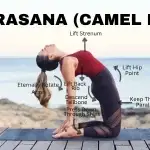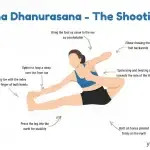Have you ever taken a moment of silence in Rishikesh, possibly sitting on the sides of the Ganges River, listening to the surroundings as they naturally speak? The sound of birds chirping, the sound of leaves rustling, and the sound of temple bells ringing in the distance. [Pranayama]
Everything around us is a beautiful composition of life. Now, what if I tell you there is another equally important, yet often overlooked, composition that is occurring within you every moment? The composition of the sounds of your breath.
What is Pranayama?
Understanding Pranayama:
When we say Pranayama, we are speaking of something much deeper than simply some “breathing technique.” The word itself kindly explains its own meaning; ‘Prana’ means life force, cosmic energy, energy that gives vitality to everything. ‘Ayama’ means extension, regulation, or control. As a result, pranayama is the conscious growth and control of this full life energy via our breath. It is about channeling hidden energy, not simply moving air.
In the ancient wisdom of Patanjali’s Ashtanga Yoga, pranayama is the fourth limb. It is an important step after the mastering of the physical shapes (asanas) and prepares the body. And then mind for deeper states of concentration and meditation. We feel it is a pillar of our teaching because it stems directly from the real, ageless legacy of Rishikesh. The home of yoga, where the knowledge actually lives.
What are the base elements in pranayama?
Consider your breath to be a beautiful river. A river has a starting point, a place to flow, and an ending point. Your breath, like a river, has different phases of travel, and knowing these is important. These are the foundational aspects of pranayama and are the beginnings of breathing with intention.
Puraka (Inhale)
This is the divine inhalation. It’s like a fresh (alive) revitalizing force, all pure energy. That flows into the Ganges or any other river from many sources that benefit it. It’s the production of a deep, thoughtful inhale that is designed to come from the entire abdominal area rather than simply the chest.
Rechaka (Exhale)
This is the conscious exhale. It is to let go—outbreath, tensions built up, or anything that does not serve you anymore. It’s like the clouds that relieve their rain on the peaks of the Himalayas. Creating refreshment and giving relief to continue on with life in a more mobile way. A full exhalation is part of the illusion towards a new inhale.
Kumbhaka (Hold)
This is stillness, a space. It is the holding of the breath in a conscious way after the inhale (Antar Kumbhaka) or after an exhale (Bahir Kumbhaka).
Picture the stillness between two waves of water where one breath comes into our environment and some deep wisdom can exist in that space or silence.
Kumbhaka is designed to allow prana to enter and deeply absorb into your body; distribution occurs throughout your system, and your nervous system stabilizes.
Now, let me be clear: While Kumbhaka is powerful, you should never use it without respect or guidance from a qualified teacher.
What are the 3 Stages of Pranayama?
The Journey Within:
Like any journey, the journey to pranayama takes place in stages, and each stage builds off the last. Understanding these 3 stages of pranayama, we can have a realistic idea of the stages and the patience to respect the practice and depth that it is.
Adhama Pranayama (The preliminary stage):
This is our starting point: learning to breathe rhythmically and in a controlled manner. The primary intention here is to slowly purify your subtle energy channels (nadis) and prepare your entire being for an engaged stage of practice. Think of this stage as tilling the soil before planting. Some key practices here are
Deep Abdominal Breathing (Diaphragmatic Breathing): This is the most necessary building block. It is very important to know how to breathe from your belly to engage your diaphragm properly.
Nadi Shodhana (Alternate Nostril Breathing) without retention: A beautiful practice bridging the left (Ida) (energetic) and right (Pingala) energetic channels, allowing for a calm and clarity of mind. A great practice for releasing stress and, again, a wonderful place to begin our practice.
Madhyama Pranayama (The Intermediate Stage):
After solid groundwork is established, we can progressively introduce controlled retention, or Kumbhaka, and practice developing the length and proportions of the breath cycles. The goal is to develop your vital capacity, clarify your mind, and even generate a mild internal heat in the body, tapas.
A slow, prescribed practice of nadi shodhana with antar kumbhaka (retention) will take the balancing benefits of the flow of nadi shodhana deeper into the process of purification and prana absorption.
Ujjayi Pranayama (Victorious Breath):
Ujjayi is a soft constriction at the back of the throat that will create a soft ocean sound while inhaling and exhaling. It is extremely warming, seeks to catch the mind, and is wonderful to include with your asanas.
Bhastrika Pranayama (Bellows Breath):
An exhilarating and cleansing process that draws breath in and out quickly and forcefully. It is very energizing, but again, many precautions should be taken as it is powerful, and it is advisable to take the practice up and build to it with the assistance of an instructor if your physical situation warrants it.
Uttama Pranayama (The Advanced Stage):
In this area, we are entering into lengthier retentions, including bandhas, and creating deeper meaning and a smoother path into intense meditative states. The goal is to activate spiritual energy and expand beyond our mental models. These are powerful practices and absolutely need to be practiced with the direct supervision of a qualified teacher, such as the Yogant Foundation.
Kapalabhati (Skull Shining Breath):
Commonly thought of as a kriya (cleansing action) practice with some pranayama effects, is a practice of forcefully exhaling and passively inhaling and feels like a kind of cleansing.
Brahmari Pranayama (Humming Bee Breath):
During this pranayama, a soft humming occurs with the exhale. This soothes the nervous system, eases anxiety, and prepares the mind for a deeper meditative state through its sustained hum.
Introduction to Bandhas: Mula Bandha and Uddiyana Bandha
Mula Bandha (root lock), Uddiyana Bandha (abdominal lock), and Jalandhara Bandha (throat lock) are three subtle energy locks that deepen and contain the effects of Pranayama practices. Understanding and applying these bandhas is important to advanced practice.
Types of Pranayama
The Spectrum of Breath: (A Practical Guide)
As we began to explore them in the earlier stages, let’s get to know some specific types of pranayama that you may experience and practice:
Nadi Shodhana (Alternate Nostril Breathing):
A wonderful practice. It calms the nervous system, balances the two brain hemispheres, and clears the energy pathways. It is often the first practice recommended for new practitioners due to the amount of calming it offers.
Ujjayi Pranayama (Victorious Breath):
The “oceanic” breath. The wonderful “oceanic” breath is lovely for improving awareness and focus during asanas while also helping to establish a meditative state.
Kapalabhati (Skull Shining Breath):
An active, cleansing breath that produces heat and clears the frontal sinuses. Kapalabhati Pranayama is a beautiful practice for waking up the mind, but always remember to learn the particular technique to avoid becoming overstimulated.
Bhastrika (Bellows Breath):
This is an energizing breathwork practice. It aids in increasing oxygen intake quickly throughout the body, internal heat, and clearing congestion. Proceed with caution!
Sheetali/Sheetkari (Cooling Breaths):
Good for hot days and when one feels overheated. Sheetali asks you to curl your tongue and breathe; Sheetkari breathing asks you to breathe through your teeth (clenched). Both are quick and effective methods of cooling the inner heat.
Brahmari (Humming Bee Breath):
A lovely practice, the resonance of a humming sound is used to calm the mind, relieve tension, and create a sense of peace. Brahmari is an excellent preparation for meditation.
Benefits of Pranayama
What’s the purpose of conscious breathing then? Pranayama has many benefits, including physical, mental, emotional and spiritual. This is a journey that encompasses all aspects of your being.
Physical Balance: Strengthen your diaphragm, increase your lung capacity and improve respiratory health. Pranayama is good for circulation, detoxification and immune health. Feel healthier with increased energy.
Mental Focus & Emotional Resiliency: It is emotional resilience and focus that are the real secrets. Pranayama has been shown to calm the nervous system and reduce anxiety. This also reduces the stress hormones. This can improve concentration, learning ability, focus and increase your flexibility. It also helps to calm your mind, regulate your emotions, energize your sleep, and promote a restful night’s sleep.
Spiritual Awareness: In addition to the physical and mental benefits, Pranayama is a spiritual practice that can be used to enhance awareness. It will increase the flow of prana, it will cleanse the nadis or subtle energy channels, and it will prepare your mind to deepen meditative states. It actually provides a direct process for developing inner awareness. Regulating and balancing the energy flow of your chakras, and being able to achieve great inner peace and stillness.
Experiencing Pranayama at Yogant Foundation, Rishikesh
The path of Pranayama is personal, yet infinitely richer when you’re supported by authentic guidance. At Yogant Foundation, we pursue the ancient knowledge of Rishikesh, the original Yoga Capital of the World, in an environment conducive to spiritual setouts. So why learn pranayama with us? Here is what you will receive:
1. Authentic Lineage.
2. Sacred Ground.
3. Holistic Experience.
4. Personalized Assistance.
Are you ready for the untapped, invisible power of your breath? Are you ready to experience the life of Rishikesh? Join us at Yogant Foundation for a wonderful journey to complete wellness. The journey to aware breathing and inner balance begins with a focused inhalation.
Learn about our Yoga and Meditation Retreat programs and upcoming retreats to get started.




Pingback: Types of Pranayama: Ancient Breathing Techniques for Energy